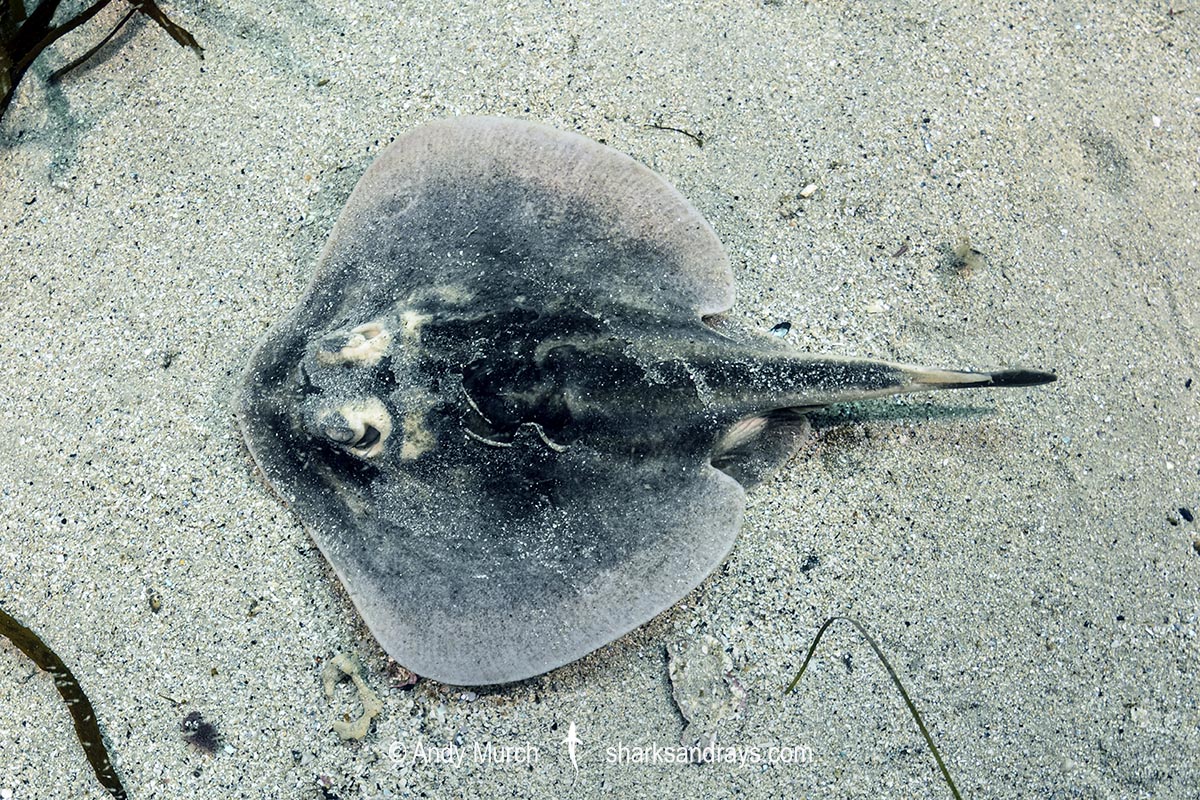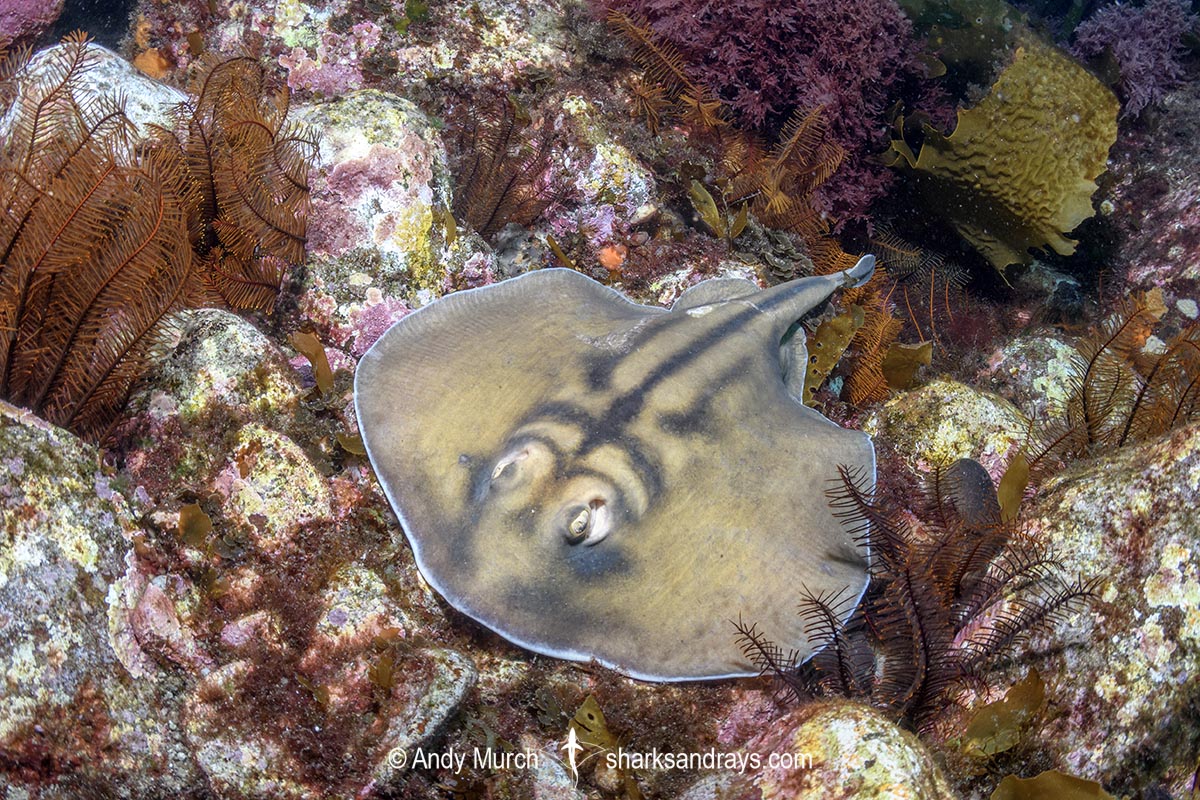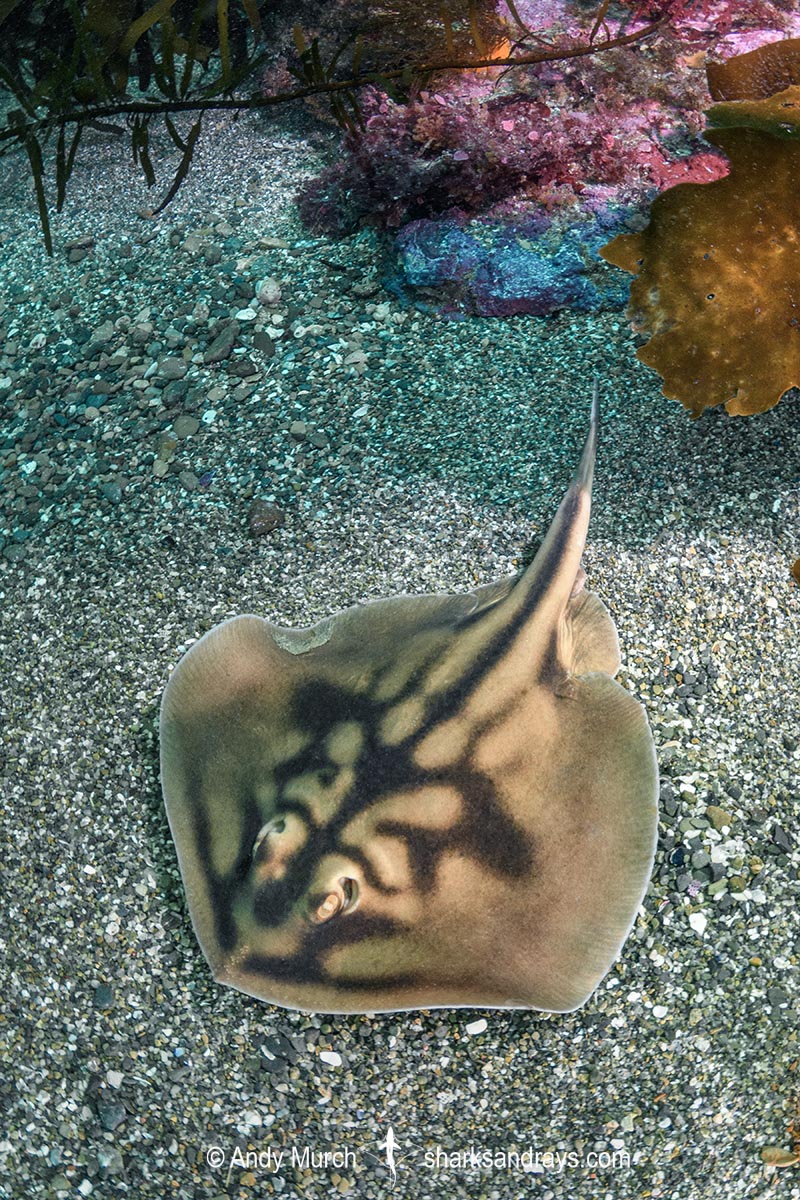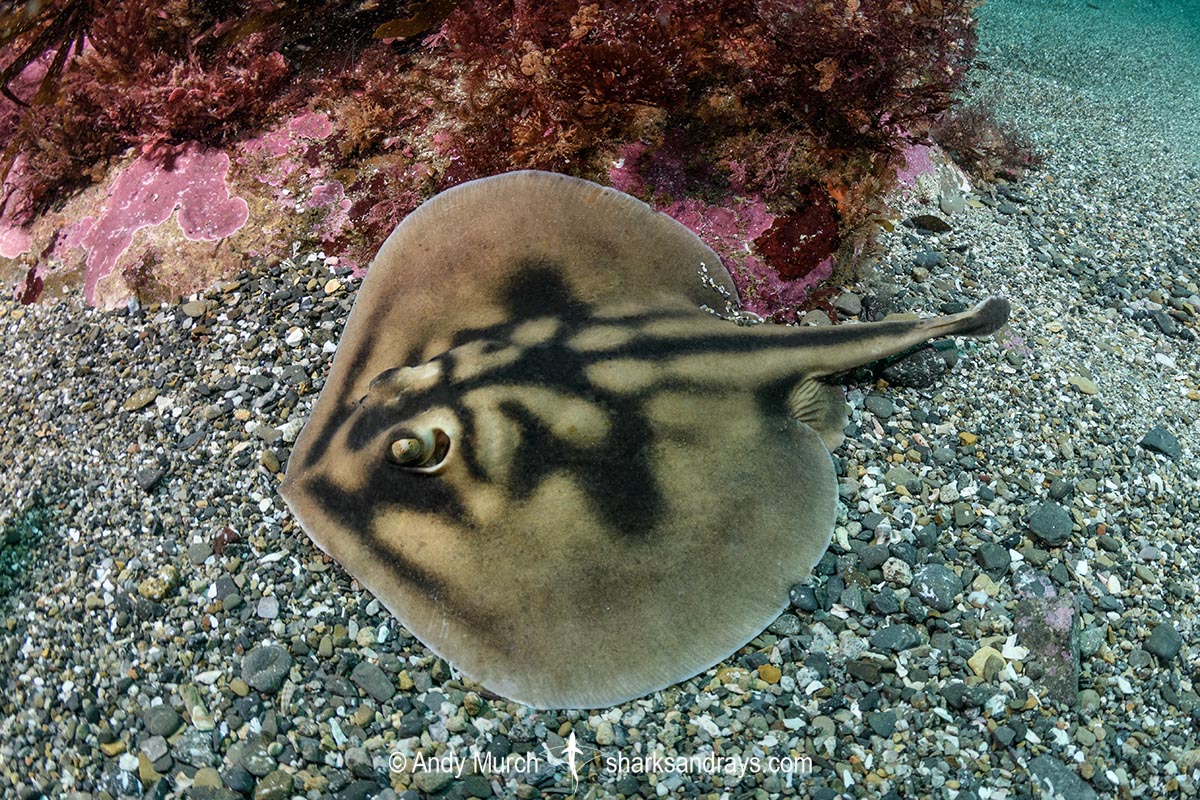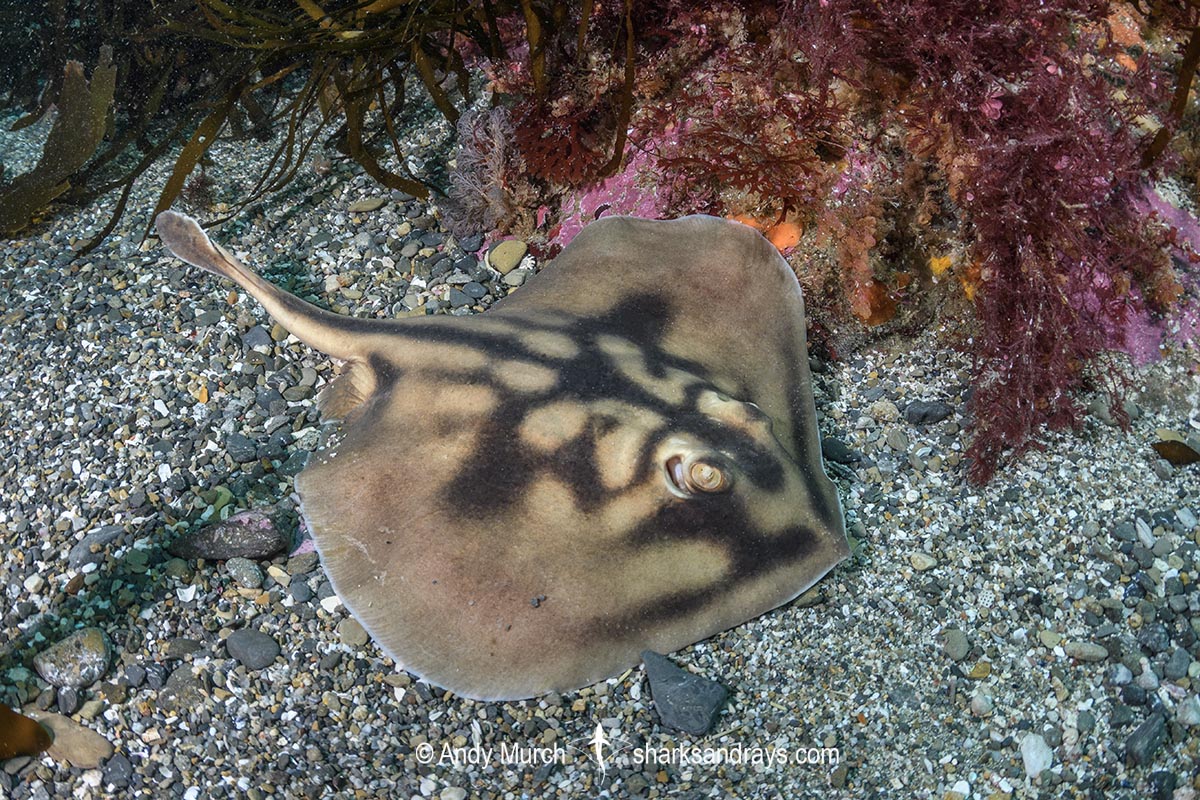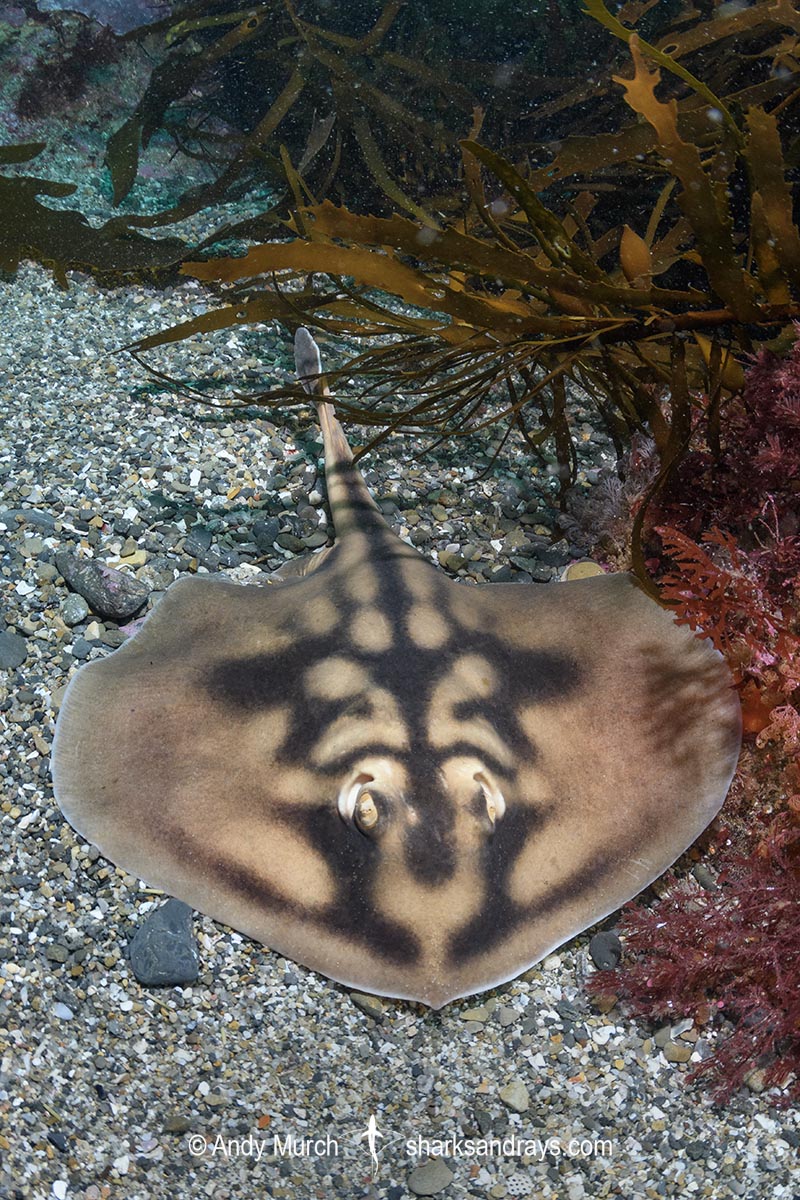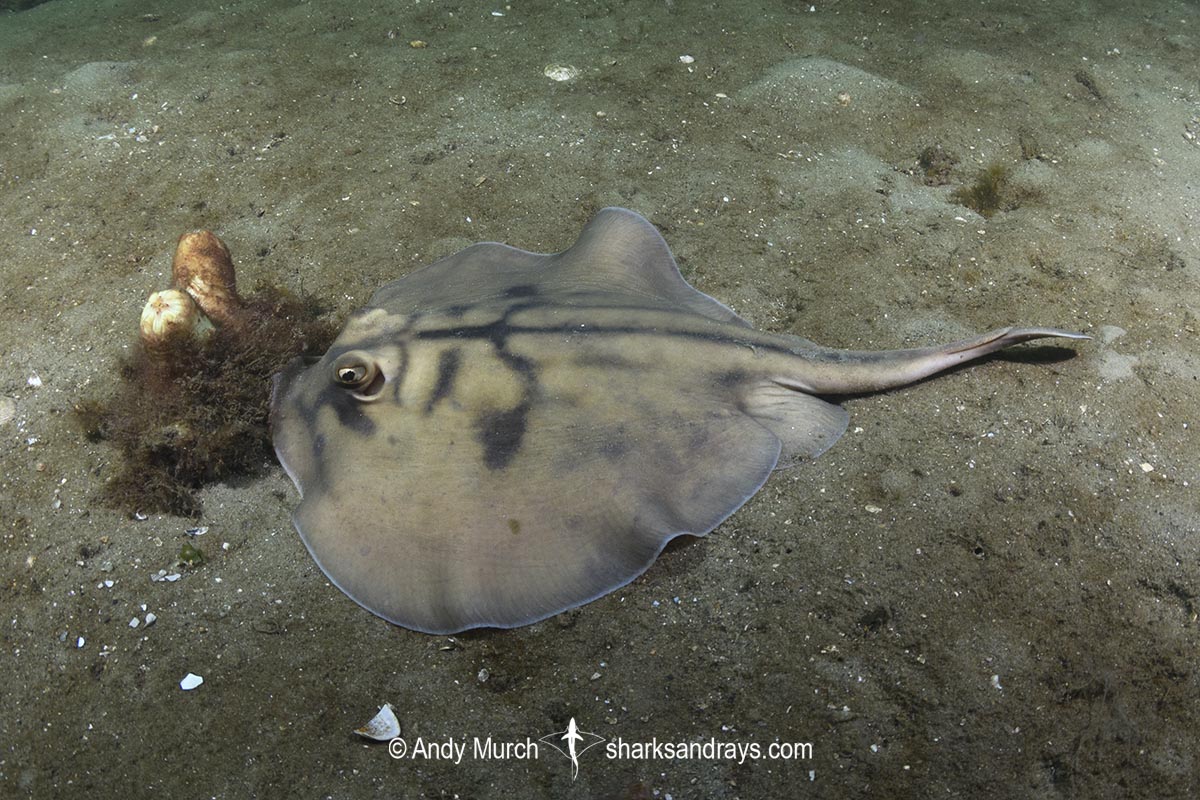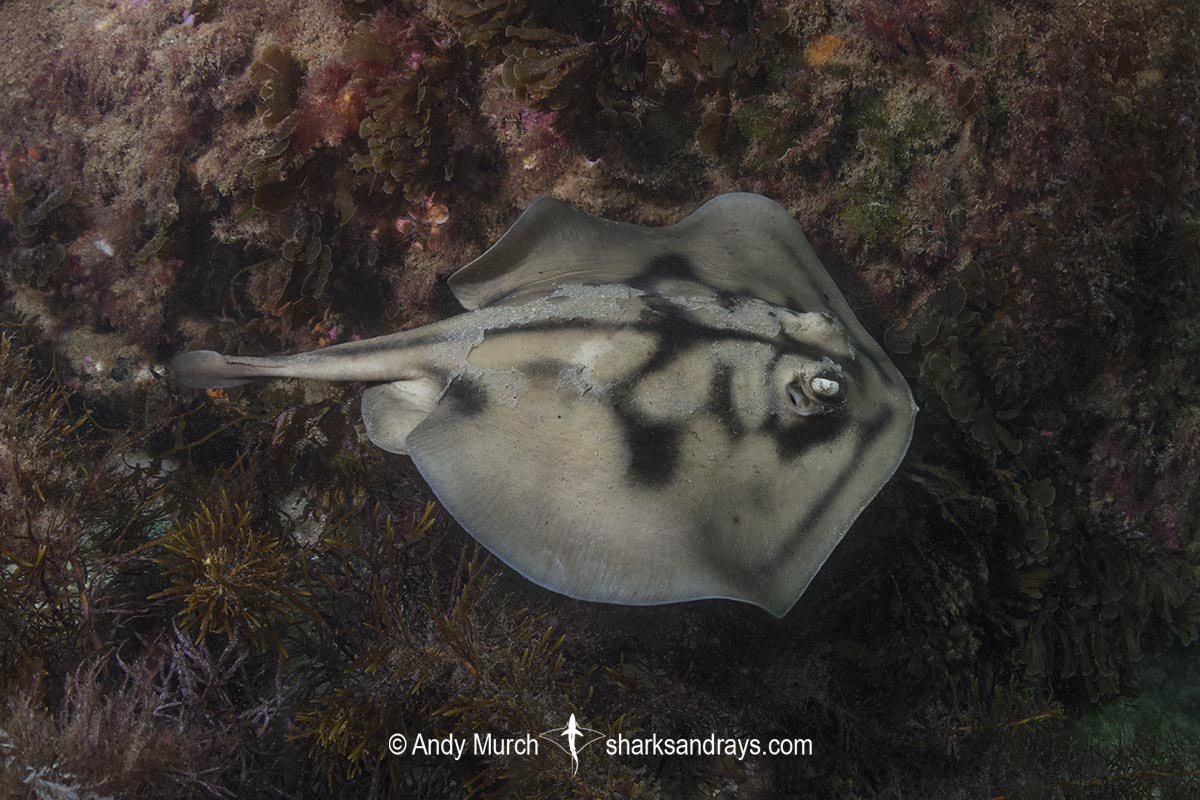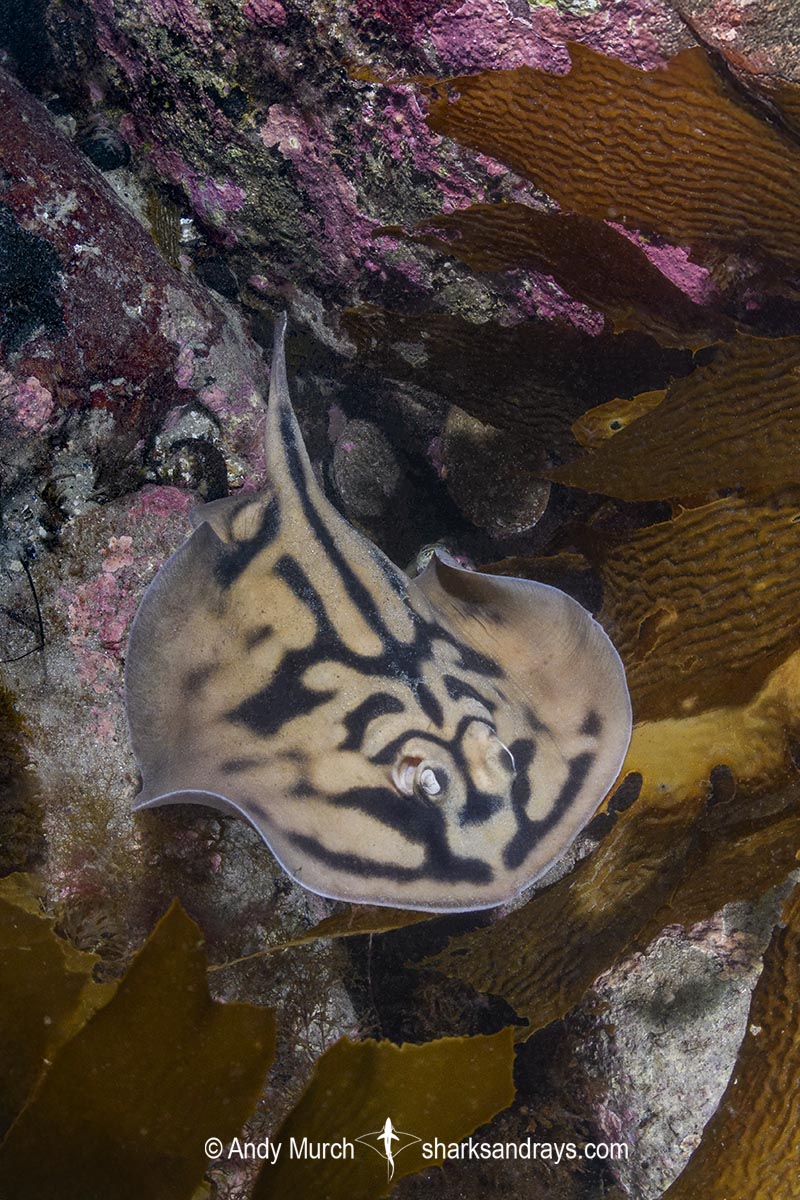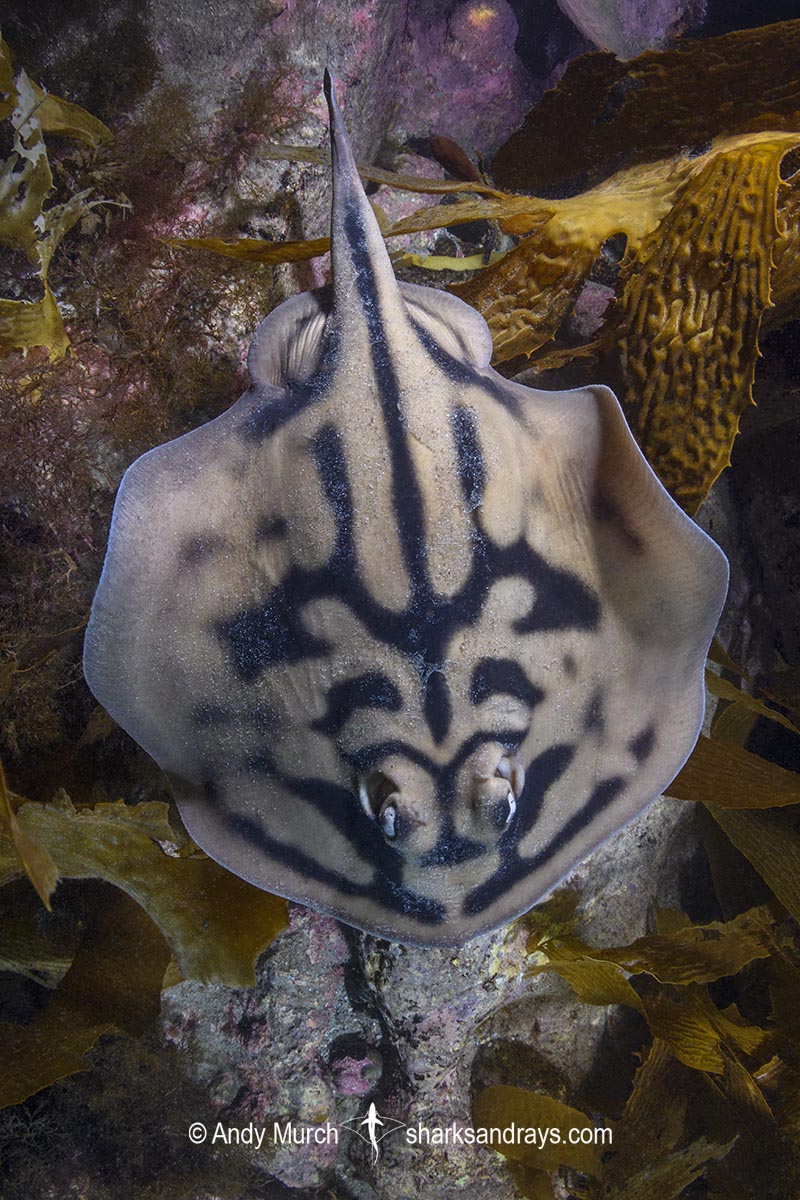Common names
Banded Stingaree, Crossback Stingaree.
Binomial
Urolophus cruciatus.
Synonyms
Raja cruciata, Urolophus ephippiatus.
Identification
A medium-sized stingaree with a subcircular disc that is slightly wider than long. Snout pointed; obtusely angular. Anterior margins of disc straight or slightly convex, apices broadly rounded. Disc completely smooth.
Eyes medium-sized; orbit length 0.25-0.28 x snout length. Spiracle origin below mid-eye. Mouth small. 3-6 oral papillae on mouth floor. Nasal curtain bell-shaped, not-extended posteriorly into a distinct lobe, posterior margin heavily fringed.
Tail short but variable; 0.63-0.84 x disc length. Tail base oval or circular in cross section. A low dorsal fin absent sometimes present in juveniles, absent in adults. Caudal fin short and deep, with a broadly rounded tip.
Colour
Dorsum greyish to yellowish brown with a bold but variable pattern of blackish bars and vague circles that sometimes form a stylized cross along centre line and between centres of pectoral fins. A thin dark or dusky line parallel with anterior margin of disc is also often present. Caudal fin greyish. Ventrum white, sometimes with dusky outer margins.
Size
Total length 50cm. Length at birth 15cm.
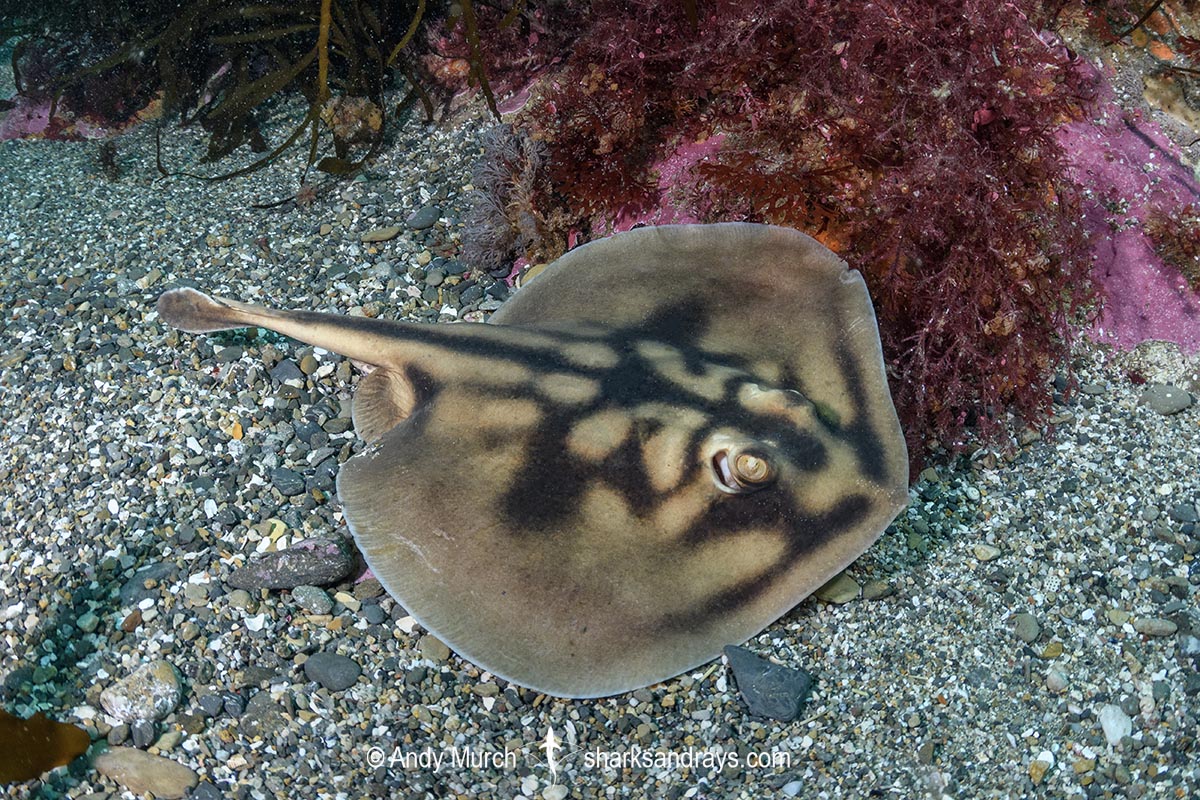
Conservation Status
LEAST CONCERN
The Banded Stingaree is an abundant species with a relatively small distribution. It is a discarded bycatch in ground fisheries in the Bass Strait, but no declines have been reported. The population appears to be stable.
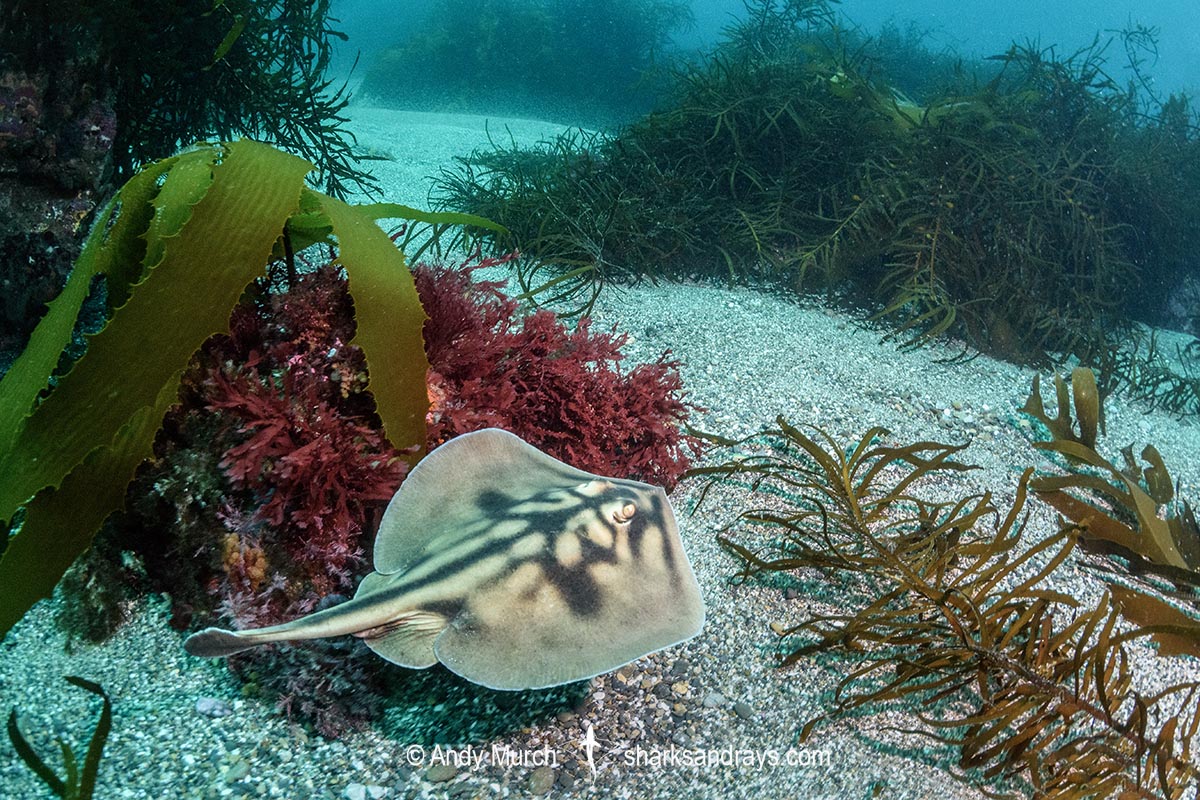
Habitat
Temperate seas. Usually found on soft substrates in bays and estuaries, often adjacent to sea grass beds and rocky reefs. Common is shallow water but also found deeper on the continental shelf; 2-210m.
Distribution
The banded stingaree has a restricted range in Southeastern Australia, from Beachport in South Australia to Jervis Bay in New South Wales, including all of Tasmania.
Reproduction
Viviparous. Litter size 1-4 pups biennially.
Diet
The banded stingaree mainly feeds on isopods, other crustaceans, and marine worms.
Behavior
Remains buried for long periods of time when not feeding.
Reaction to divers
Quite skittish. Generally moves away when approached closely but resettles quickly.
Diving logistics
Although the banded stingray is seen in Victoria, it is far more abundant in Tasmania. The shore dive at Bicheno Beach on the east coast of Tasmania is particularly good for this species. A search of the sand is likely to turn up a dozen or more animals.
Dive site in the Derwent River estuary south of Hobart are also good. Urolophus cruciatus abundance appears to be slightly lower on the Tasman peninsula but (in December) I still found one or two on every dive.
What’s new
View our full list of updates
Similar species
Kapala Stingaree Similarly but less boldly patterned. Found further north on the east coast.
Coastal Stingaree Distinguished by more diffuse pattern and more westerly range around Adelaide.

